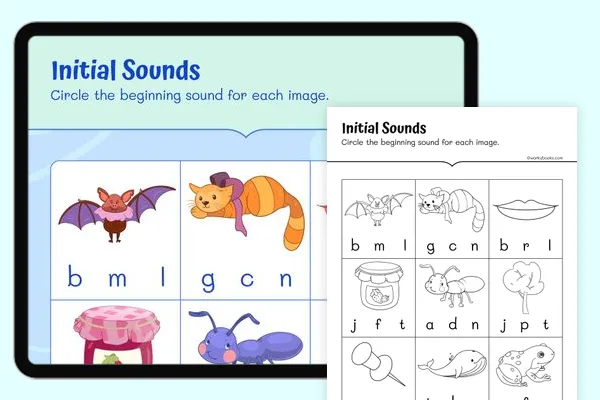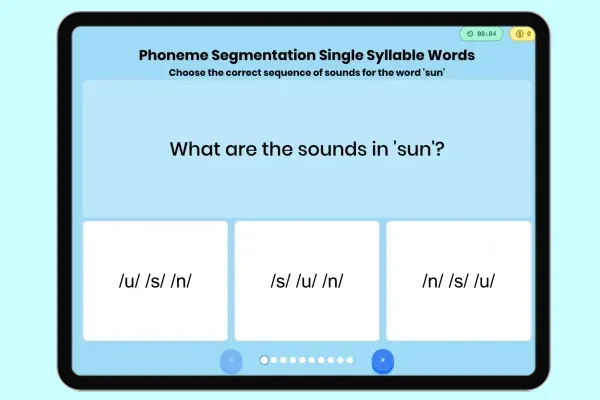Animal—Letter Scramble Worksheet
- 1
- RF.1.2.B
- RF.1.2.C
- RF.1.2.D
This learning resource is available in interactive and printable formats. The interactive worksheet can be played online and assigned to students. The Printable PDF version can be downloaded and printed for completion by hand.
About the Worksheet
This interactive and printable worksheet, is designed to help young learners practice unscrambling letters to form words. It consists of six scrambled words, with the first one solved as an example. The words on the worksheet are gpi (pig), cta (cat), tab (bat), ogd (dog), and nta (ant).
This educational resource is an excellent tool for developing spelling skills, improving visual perception, and enhancing critical thinking abilities. It can be used as a supplementary activity in language arts lessons or as a fun exercise to reinforce word recognition and reading comprehension.
What will your child learn through this worksheet?
Through this worksheet, children will:
- Enhance their ability to identify and manipulate letter sequences.
- Strengthen their understanding of word formation and spelling patterns.
- Develop problem-solving skills by decoding scrambled words.
- Reinforce their knowledge of common vocabulary words.
- Practice visual discrimination and attention to detail.
Learning Outcomes
Cognitive:
- Students will be able to recognize and unscramble letter sequences to form words.
- Students will be able to identify and spell common vocabulary words correctly.
Psychomotor:
- Students will develop fine motor skills by writing out the unscrambled words.
Affective:
- Students will gain confidence in their ability to solve word puzzles.
- Students will develop a positive attitude towards learning and practicing language skills.
Interpersonal/Social:
- Students can collaborate and discuss their strategies for unscrambling words with peers.
Tags
Unscramble letters worksheet, word scramble activity, spelling practice, reading comprehension, visual perception, critical thinking, vocabulary building, problem-solving skills, language arts, educational resource.
Common Core Standards Covered
Perfect For:
- • Classroom assignments
- • Auto-graded assessments
- • Printable handouts
- • Home learning support
- • Homework help
- • Skill reinforcement
- • Curriculum planning
- • Self-paced learning
- • Progress tracking













